
Idea to boat
Part One: Design sketches, out of the closet
They have different names: envelope sketch, napkin sketch, cartoon. None of them are particularly complimentary tags, especially considering the importance of these first capturings of an idea on paper. They are the pillar that the whole design rests on.
In Common Sense of Yacht Design, L. Francis Herreshoff emphasized the importance of the budding designer practicing his or her drawing skills. Not drafting skills, freehand skills. His first sketches of boats like Ticonderoga or Rozinante would be fascinating to see. Cy Hamlin, in his book on preliminary boat design, devoted a whole chapter to freehand drawing.
I’ve always sketched out my boat ideas, but they were For Office Use Only. I’ve shown a few to potential customers, sometimes they helped make a project go, but the customer often looked doubtful—until they saw the final drafted drawings. . .and especially the boat that resulted from the process that began with that sketch. There’s a feel, a heart, a massing, a subtly of form that is captured in the sketch and I work hard to hang onto it in the drafted plans and built boat.
Going directly from the sketch to a fully drafted sail plan can work very well, as it did for the Somes Sound 12 1/2, but for most evolving designs I need something cleaner and more refined than the first sketch but quicker and looser than the full drafting.
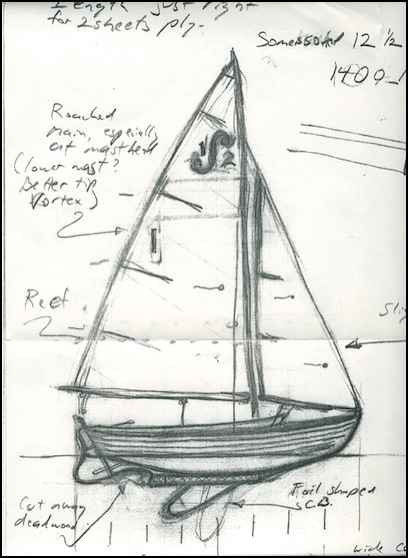
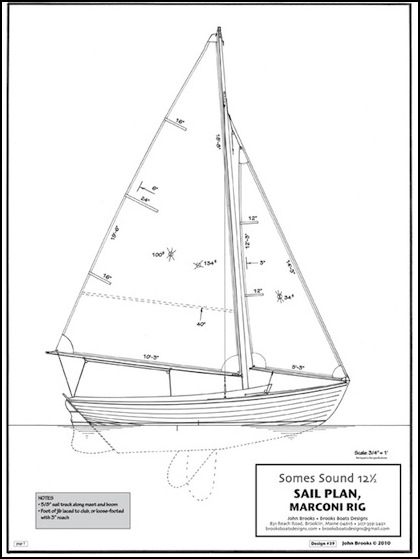
I found that by enlarging the rough sketches, then taping them to a light table and tracing freehand, I can take the lines of the rough sketch—that often look like they were drawn with a crayon—and begin to refine the curves, lines, and shapes. One thing I like about this second level of drawing is that if we hang it on the wall and think “hmmm, what about changing the stem shape,” fifteen or twenty minutes later I can have a whole new drawing to hang up next to the first. We did that several times with our new (and still evolving) design for a folkboat-inspired, competitive but family-friendly boat. Quickly scanning and emailing these simple little drawings works perfectly for exchanging ideas with others and aiming the design in the right direction. I can make more presentable drawings by tracing them in ink on the light table, but pencil sketches generally scan well enough for discussion purposes.
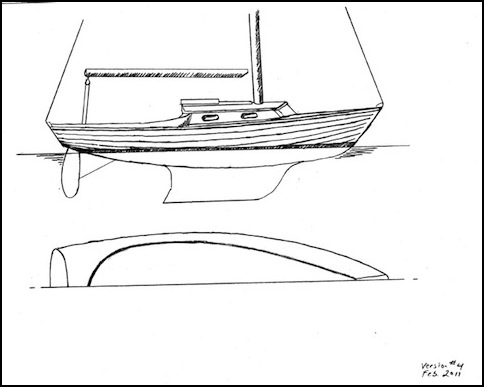
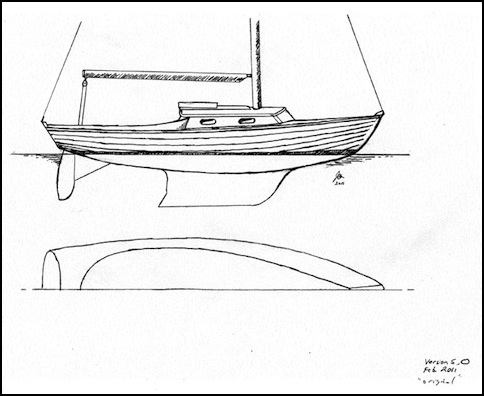
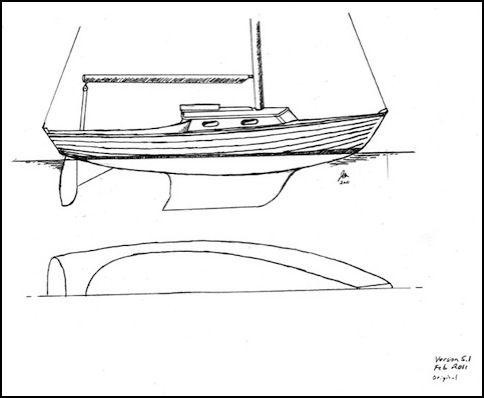
This process also makes it easy to come up with major changes quickly, like a new cabin design or sail plan. For example, the first sketch for our Silver Penny daysailer, a requested (and also evolving) 19’ relative of the Scandanavian work boat Sjogin had a gaff rig then an hour or two later there was another one, with the marconi rig. The little trunk cabin as sketched wasn’t quite right, so that changed, too. The trunk cabin is a fine example of using these simple sketches to figure out the gnarlier aspects of form vs. function: one of the many charms of the original Sjogin is her cabin and how it settles into the whole boat, just right. A 19’ boat cannot have the same amount of cabin, there just isn’t enough length in the boat; something has to give, somewhere. But a cabin is incredibly useful, its practical functions are many, from providing a bit of warm and dry to offering a modicum of privacy for necessary, err, functions.
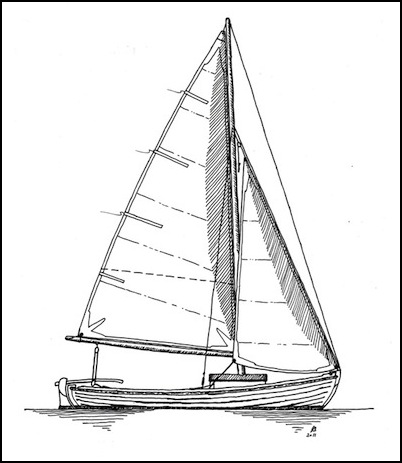
Though we haven’t mentioned the word “computer” yet in this discussion, this is the point at which it enters into the process, not to generate the design but to have some fun with Photoshop’s pots of paint to produce a new perspective, and a better feel for how the boat will look out there on the bay:
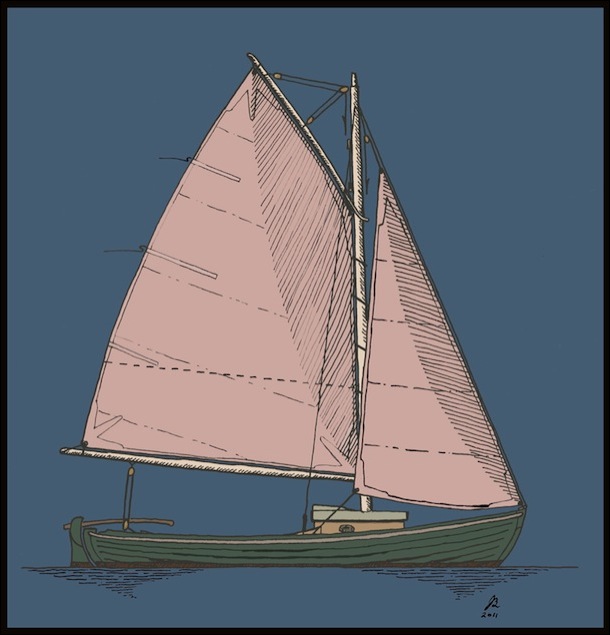
These sketches are just the beginning of a design process that continues through the paper stage, through the building, until the boat comes to life upon the water.
TO COME. . . . .
Paper to wood, shaping the design in three dimensions.
Once we’ve established the basic design and have a firm go-ahead, I’ll draft the final sail plan and start a lines drawing then carve a half model and record the sections from the half model to the lines drawing. We’ll talk about that part of the design process in the next installment.


